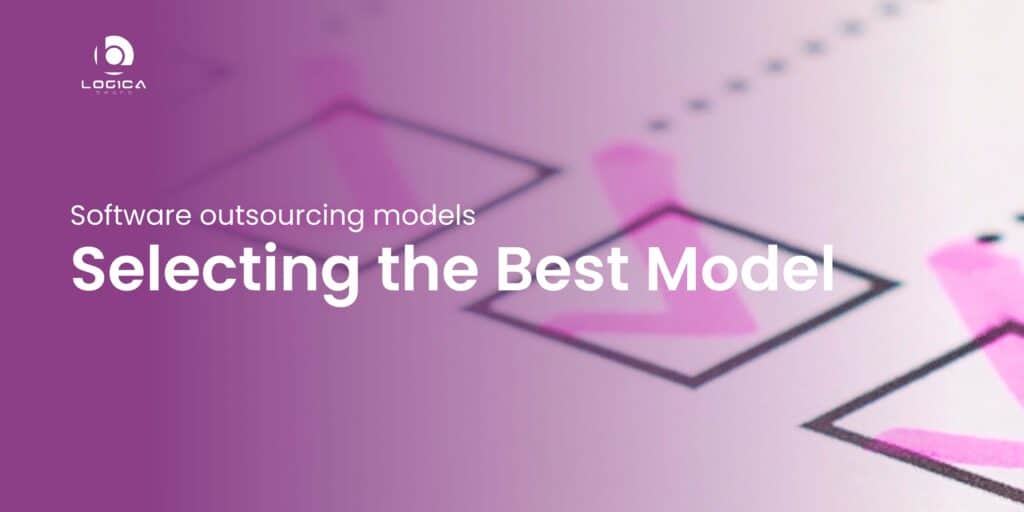Software development outsourcing has become more popular and attractive among tech-savvy businesses. Business organizations have embraced outsourcing software development to stay competitive in the market. These companies are aware that using one or more forms of outsourcing enables them to execute and develop more quickly, find some of the best individuals with the necessary skills, and utilize their resources more effectively.
Purchasing a pre-existing solution for your business is not always sufficient. It either lacks the capabilities you require or doesn’t integrate effectively with your current tech stack. Or perhaps there aren’t many solutions available on the market and you want custom software. You have made the decision to seek the assistance of a software development business since you lack the time or resources required to create this sort of product on your own. You’ve chosen a software provider, scheduled a meeting, and created a list of criteria for your solution.
Three primary Software Outsourcing Models
● Staff Augmentation Model
In order to complement a company’s internal workforce, a business approach known as staff augmentation is used. Without committing to their long-term employment, this strategy enables firms to temporarily boost their staff as needed, adding people with particular skills and expertise.
In technical businesses like software development, IT, and others where the need for trained laborers can be erratic and vary fast, the staff augmentation approach is frequently employed. Employing a staff augmentation approach allows businesses to easily ramp up their employees to meet rising demand, scale them back when the need declines, and thereby lower costs and improve operational flexibility.
The benefits of staff augmentation include having access to a bigger pool of skilled personnel, having to pay less for recruiting and training, and being able to keep control over project management and procedures. The biggest drawback is the loss of control over the job done by outside workers and the possibility for decreased teamwork and communication.
● Managed Team Model
The managed team model is a kind of outsourcing strategy where the client company hires a third-party provider to oversee and offer a committed team of workers. While the customer has authority over the project’s parameters, schedule, and money, the supplier is in charge of recruiting, employing, and supervising the team members.
The managed team approach offers firms a variety of advantages. For instance, since the supplier is in charge of locating and fostering the appropriate talents within the team, it can assist in lowering hiring and training expenses. The customer can also gain from the provider’s experience in hiring, managing, and motivating staff members as well as its access to a wide pool of prospective personnel.
Organizations may improve their operational flexibility by using the managed team model since teams can be scaled up or down to accommodate shifting business demands. Additionally, compared to other outsourcing models, such staff augmentation, this strategy gives the client more control over the team.
The managed team model can also aid firms in improving their operational flexibility because teams can be expanded or contracted to accommodate shifting business requirements. The customer also has more influence over the team with this strategy than is feasible with other outsourcing methods, including staff augmentation.
● Project-Based Model
One kind of outsourcing model utilized for specialized, time-sensitive tasks is the project-based approach. In this approach, the customer hires a third-party supplier to provide a certain result or collection of deliverables within a predetermined timeline and price range.
The customer retains control over the project scope and objectives while the provider is accountable for completing the project in accordance with the specified timetable and standards. This paradigm is frequently employed in fields where projects have a distinct beginning and finish and call for specific knowledge and competence, including software development, IT, and engineering.
Organizations can profit from the project-based paradigm in a variety of ways. Because the customer only pays for the resources required to finish the project, it might, for instance, assist to cut expenses. Furthermore, it enables the customer to access a large pool of specialized talents and experience that might not be present in their current staff.
This strategy is also adaptable since the supplier may adjust their resources to fit the project’s requirements. Additionally, because the provider is in charge of completing the project by the specified deadline, the customer is able to launch additional projects more swiftly.
Fixed-price Model for Software Development Outsourcing
What is Fixed-price Model?
The fixed cost model is the one that most businesses use when outsourcing IT work. This tactic might work well if the client and the outsourced team have worked together before and have a thorough understanding of each other’s cultures and work styles. If the client has a complete understanding of the project and is aware of its costs and difficulties, then the fixed cost model is appropriate.
Additionally, a “fixed in stone” deadline exists by which the client is “assured” to get the finished work. Additionally, they can quickly monitor the project’s development with the help of a clear plan that includes goals and milestones. Moreover, the customer doesn’t need to oversee the process, so everything appears to be straightforward and predictable. A Fixed-Price model can be what you need if your project is modest, has well defined features, and there is little chance that anything will change.
Having said that, doing business with an outsourced company for the first time almost never goes well. The outsourced team must adjust to a variety of factors when working on a first-time project, including the project’s requirements, the available apps, and the client team’s work culture.
The fixed price model approach is not ideal, particularly if you are not fully aware of the amount of work necessary to complete a project. Because of the misunderstandings between the customer and the outsourced workforce, costs may be unexpectedly higher when outsourcing for the first time.
Advantages of Fixed-Price Model
1. Predictability
The main quality that each business owner looks for is predictability. Clear dates and numbers must often be carried from company strategy to the budget. Planning spending one to three months in advance can give you precise numbers. However, if product development would take four months or more, it makes sense that you won’t be able to predict total costs, and in these situations, alternate pricing models are advised.
2. Transparency
With set objectives, a clear budget, and pre-arranged timelines, there will be no surprises. Regular interaction between project managers and contractors ensures scope compliance and preserves margins.
3. Management simplicity
Payments to service providers are frequently based on a percentage of completed work.
Disadvantages of Fixed-Price Model
● A fixed-price contract’s fundamental drawback is its lack of flexibility. Any emergent alterations that you started or that go beyond the vendor’s capabilities are your responsibility as the customer.
● Depending on the situation, having less accountability offers both advantages and cons. Such an approach excludes regular reporting and conversations between the customer and team. You don’t need to set aside time for significant project participation because team members handle all of the management. This does not, however, indicate that you won’t be familiar with the workflow.
When can you safely choose Fixed-Price Model?
- ● It is a small or medium-sized project, as well as an MVP.
- ● You have clearly stated your goals and expectations to the developers, which means you can sketch the user’s route step by step and have some experience developing user stories.
- ● The project specifications will not change.
- ● You don’t need or have time to meet with the development team.
- ● As there is little chance of development issues occurring, you may delegate all authority to the developers.
- ● You have a restricted project budget, or you must first have the project budget authorized.
- ● You are not concerned with time but with deliverables, which implies that the project may be completed sooner than expected but you will still be charged the predicted amount.
Time and Material Model for Software Development Outsourcing
What is Time and Material Model?
A time and materials contract (T&M) is fundamentally different. It is assumed that clients will be invoiced for actual task scope based on hourly labor rates. Customers are charged for the number of hours performed on a certain task, as well as material costs. The T&M model’s main benefit is its adaptability and capacity to modify criteria, change directions, substitute features, and involve users in order to get the desired outcome.
With time and material, you pay the software team for the labor hours necessary to complete a specific project as well as the materials used, as opposed to paying a lump sum up front. Since there are no set prices or strict deadlines for the team, this type of collaboration model works well when it is impossible to predict how much the project will cost or how long it will take to complete.
How does time and material model work?
- ● You decide on the estimated project timeline and the required resources in collaboration with a contractor.
- ● Parts of the project have been divided. In this way, you can decide which functionalities should be developed first, but you can also make changes and additions as you go along and assess which functionality will be most advantageous to your company.
- ● The typical day rate for developers is a set amount. You and your contractor decide which functionality to build and then agree on the number of days needed to implement it.
- ● You are charged for the hours worked when developers complete the tasks and potentially improve them in response to your feedback.
Advantages and disadvantages of time and material model
The primary advantage of a time and material collaboration model over a Fixed-Price approach is that you keep far more control over the project. You may also alter project parts as needed. If you don’t yet have a clear picture of the entire product, the Time and Material model is a good option.
Advantages of time and material model
● Control: Control over the project’s direction, as well as its outcomes. On the one hand, you have control over which features to launch first, so you may prioritize those that are important to end users or those that generate income rapidly. On the other hand, frequent touch with a development team eliminates surprises.
● Budget administration: In reality, with a time and material contract, you have more budget management flexibility. You may scale the team up or down as needed, and the contract can be terminated at any time.
● Quality: You maintain frequent touch with the vendor’s team, monitoring their progress and providing input to ensure the final result. You provide comments to a development team with each iteration.
● Flexibility: Changes are not a problem with time and material contracts. Furthermore, the collaboration is open-ended, so you can terminate it whenever you believe the present condition is adequate for the MVP. A changing business environment does not necessitate wasting time on contract renegotiation.
● Earlier commencement: You don’t need to identify every element of what has to be done first, the collaboration can begin sooner than in the event of a set price agreement. Instead of discussing, you begin developing your app.
● The results are noticeable sooner: When you begin the collaboration quickly, the initial results are also visible sooner. This also helps you to exhibit the app to potential users or investors more quickly.
Disadvantages of time and material model
● Going over budget: If you adjust the specifications, the budget may vary. However, the widespread idea that time and material contracts are more expensive is a misconception.
● Spending insufficient effort on planning and design: A smart contractor will almost always begin a job with a Discovery Phase. As a result, you won’t have to worry about spending too little time researching the functions and features that your future product will require. Detailed plans created before the development process begins do not avoid budget overruns and do not ensure the end product’s quality.
● Choosing an ineffective contractor: It’s not inherently a disadvantage of a time and material agreement, but it’s something to be aware of. Time and supplies are limited.
Things to consider before choosing time and material model
The budget is the real worry here, even though everything sounds great. If there is no stated price in the contract, how can you keep track of project costs, and if you pay the team based on the number of hours they work on your project, won’t the total cost be much higher than the initial budget?
It’s much simpler than you’d think to manage the budget for a Time and Material collaboration model. You can anticipate the project cost in advance because each activity in the project has an approximate cost. You will regularly receive detailed reports on how much time the development team spent on a specific activity, how many employees were engaged, what materials were purchased, and any other unexpected expenditures in order to facilitate budget control.
The project’s development could be more difficult to manage. You can assign all work to developers up until the product is finished using a fixed-price model.
Time and Materials or Fixed Price: Reasons not to settle everything ahead of time
Given that a project’s total cost is known before it is developed, is the fixed-price approach less risky?
Actually, it is just an appearance, and it has no beneficial effect on the investment. Prior to the project starting, when you know the least about your project, all business and product decisions, as well as the scope of work, must be made.
The hourly or man-day rate used in the time and materials model determines how much a project will cost.
Your project gains in the following five ways when you don’t make all of your decisions right away:
- ● The outcome is better because you are adaptable.
- ● The end result is better because you set priorities.
- ● It is quicker to use the time and material model.
- ● Savings are made.
- ● Time and resources have a limit on risk.
Conclusion
Time and materials contracts, in general, make collaboration more comfortable and the project less dangerous. The contract guarantees that your contractor will provide an excellent market-fit product that you will enjoy.
When a project is short and has easily determinable criteria, both contracts will do the job, but a fixed price contract may be a better choice in this case.










